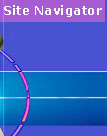 |
 |
 |
|
Insects are short-sighted whereas kestrel can see clearly from a height of 1.5 km. Hawks can spot a prey from a longer distance compared to what human beings can. The range of distances animals can focus on is measured in dioptre. We have good focal range compared to most mammals. A child's sight is about fourteen dioptres, and an old person's is about one dioptre. Many creatures have poor focal range accommodation or none. A dog copes with one dioptre. However, diving birds have 50 dioptres -- the greatest of all animals. |
 |
 |
|
workshop theory slide gallery |
 |
|
|
Most invertebrates don't need to accommodate large focal length; their sight involves short focal length and great depth of field -- keeping everything in equal focus (though without much fine detail). We can see things from an inch or farther whereas we can't focus much on things six inches away. The f- number of the human eye is about 2.55, whereas for a standard Camera it is 1.8, and the most sensitive vision is of the deep sea Crustacean Gigantocypris (f-0.25). The position of eye over the head decides the field of vision. There are two types of fields of vision viz., the field of view of an individual eye, and overlapped portion of field of view (binocular field). When the eyes are on either side of the head, view is almost panoramic, but there is a loss of stereoscopic depth perception. Animals engaged in "hunting" have a broader field of panoramic vision. Whereas animals, which are being "hunted", tend to have far broader field of view. Hunters tend to have a much larger " blind area" behind the head than hunted animals. Humans have a total field of view between 160 to 208 degrees, about 140 degrees or so for each eye and by regular field of 120 -- 180 degrees. A dog has total field of view of about 280 degrees with 180 -- 190 degrees for each eye and 90 degrees of binocular field. A rabbit has total field of view of the 60 degrees, to 20 degrees for each eye, with only 30 degrees of binocular field in front and 10 degrees behind the head. Human eye can distinguish 250 colours. Some mammals are colour blind. Birds have senses to see more colours than human beings. The desert ant has the most refined colour system amongst insects and can discriminate between colours which we can't see. Many insects are sensitive to ultraviolet light whereas invertebrates are not. The colour vision of bees is different from ours, these bees are highly sensitive to ultraviolet light and insensitive to red light. Many insects, fish and birds can see beyond violet into ultraviolet radiation. On the other hand, at the other end of spectrum of electromagnetic energy, there are reptiles like snakes which are sensitive to infrared, which they use to detect the presence of warm blooded animals. Some freshwater fish can see far further into red wavelengths. We are not sensitive to polarised light, whereas many other animals manage to see the sky as having far more colourful patterns than we are aware of. Of course human being can use tools to temporarily extend the visibility of the spectrum. The creatures with good night sight typically have reflective eye shine that we often notice. Foxes, cats and owls have far better night seeing ability than what we have. Owls have a sensitivity to low light intensity hundred times greater than that of unaided human night vision. Bat's eyes can catch 50 percent more light than ours and are eight times more sensitive than ours at night. Sensing the vision movement is the key for some creatures; eyes of creatures such as bees and frog are very sensitive to movement. Different
creatures vary in amount of brain size, which is devoted to vision.
More than half of the brain of the octopus and the squid is devoted
to vision. But we still don't know how other creatures understand what
the eyes detect. No single creature can see all that others can. We
often forget that the human world of sight is only one such world.
|
« back to topics | next topic » |